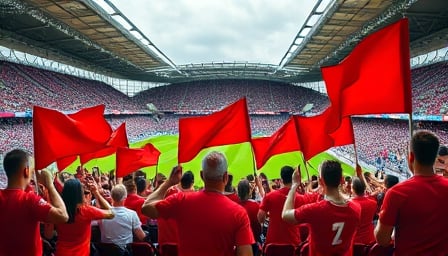Manchester United Plc: A Closer Look at Recent Market Movements
Manchester United Plc, a renowned name in the entertainment sector, continues to captivate audiences not just on the field but also in the financial markets. As a professional sports club, it manages the illustrious Manchester United Football Club, overseeing everything from media networks and fan zones to team merchandise and sports features. Despite its storied legacy, the company’s recent financial developments have remained largely under wraps, leaving investors and fans alike eager for more information.
As of May 18, 2025, Manchester United’s stock closed at $14.26 USD, a figure that sits between its 52-week high of $18.4198 USD, achieved on December 16, 2024, and its 52-week low of $12.05 USD, recorded on April 7, 2025. This fluctuation highlights the volatile nature of the market sentiment surrounding the club. With a market capitalization of $1.85 billion USD, Manchester United remains a significant player in the entertainment industry, listed on the New York Stock Exchange.
The company’s financial ratios paint a complex picture. The price-to-earnings ratio stands at -13.21, a stark deviation from the industry average. This negative figure suggests that the company is currently not generating profits, which could be a point of concern for investors. However, the book ratio of 9.06 indicates a relatively strong asset base, which might offer some reassurance.
Technical Analysis: Navigating Market Sentiment
The recent price movements of Manchester United’s stock suggest a market grappling with fluctuating sentiment. The significant deviation of the price-to-earnings ratio from the industry average is particularly noteworthy. This anomaly could be attributed to various factors, including the club’s performance on the field, strategic decisions made by the management, or broader economic conditions affecting the entertainment sector.
Investors are advised to keep a close eye on upcoming developments, as any new information could potentially sway market sentiment. The club’s ability to leverage its extensive media network and fan base might play a crucial role in stabilizing its financial standing. Additionally, strategic initiatives aimed at enhancing revenue streams, such as expanding merchandise sales or enhancing fan engagement through digital platforms, could positively impact the company’s financial health.
In conclusion, while Manchester United Plc continues to navigate a challenging financial landscape, its strong brand presence and strategic assets provide a foundation for potential recovery. As the club moves forward, stakeholders will be keenly watching for any signs of positive change that could signal a return to profitability and a more stable market position.
